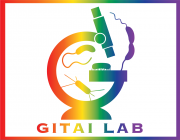A growing family: the expanding universe of the bacterial cytoskeleton.
Type
Cytoskeletal proteins are important mediators of cellular organization in both eukaryotes and bacteria. In the past, cytoskeletal studies have largely focused on three major cytoskeletal families, namely the eukaryotic actin, tubulin, and intermediate filament (IF) proteins and their bacterial homologs MreB, FtsZ, and crescentin. However, mounting evidence suggests that these proteins represent only the tip of the iceberg, as the cellular cytoskeletal network is far more complex. In bacteria, each of MreB, FtsZ, and crescentin represents only one member of large families of diverse homologs. There are also newly identified bacterial cytoskeletal proteins with no eukaryotic homologs, such as WACA proteins and bactofilins. Furthermore, there are universally conserved proteins, such as the metabolic enzyme CtpS, that assemble into filamentous structures that can be repurposed for structural cytoskeletal functions. Recent studies have also identified an increasing number of eukaryotic cytoskeletal proteins that are unrelated to actin, tubulin, and IFs, such that expanding our understanding of cytoskeletal proteins is advancing the understanding of the cell biology of all organisms. Here, we summarize the recent explosion in the identification of new members of the bacterial cytoskeleton and describe a hypothesis for the evolution of the cytoskeleton from self-assembling enzymes.

